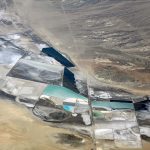Speed Bumps on the Road to Sustainable Mining
When Secretary of Energy Jennifer Granholm said on March 9, 2021, “the United States needs to boost domestic production of the minerals used to make electric vehicles, so long as it’s done sustainably,” it was a taste of things to come. Removing non-renewable minerals from the Earth’s crust does not seem to be the picture of sustainability.
To effect the “incredible transition” from fossil fuels to electric transportation requires an increase in generating capacity severalfold. Thousands more miles of transmission lines will be required to carry power from remote solar and wind farms, onshore and off, to charging stations in cities and suburbs. There is no better-known conductor of electricity than copper. The new vehicle fleet will also demand more copper than current fossil-fueled vehicles. The world’s largest copper producers are Peru and Chile. According to Norilsk, a large mining company, China consumes 52% of the world’s production. America also has a long and rich history of copper mining.
 The latest major US copper project was halted on May 12, 2022, by the Ninth Circuit Court of Appeals. Rosemont, a Canadian mining company, received Forest Service approval for its plan to mine claims for copper on Federal lands in the Coronado National Forest, Arizona, south of Tucson. The Federal court determined that the approved plan impermissibly granted Rosemont the use of 2,447 acres (4 square miles) of Federal forest land to dispose of waste rock from the proposed open pit mine. This was because neither the company nor the Forest Service showed that the mining claims to be used for the waste dumping were valid under the 1872 Mining Law – that the claims contained a “discovery of a valuable mineral deposit.” Without using and permanently occupying those forest lands, the mine cannot succeed.
The latest major US copper project was halted on May 12, 2022, by the Ninth Circuit Court of Appeals. Rosemont, a Canadian mining company, received Forest Service approval for its plan to mine claims for copper on Federal lands in the Coronado National Forest, Arizona, south of Tucson. The Federal court determined that the approved plan impermissibly granted Rosemont the use of 2,447 acres (4 square miles) of Federal forest land to dispose of waste rock from the proposed open pit mine. This was because neither the company nor the Forest Service showed that the mining claims to be used for the waste dumping were valid under the 1872 Mining Law – that the claims contained a “discovery of a valuable mineral deposit.” Without using and permanently occupying those forest lands, the mine cannot succeed.
Equally important for the “incredible transition,” perhaps more so than copper, is another metal – lithium. The largest known lithium deposit in the US is in Nevada, near the Oregon border on BLM lands at a place called Thacker Pass. General Motors is heavily invested in this mine project. This week, it is reported that the company has just broken ground. The Federal District Court allowed the mining to begin pending appeal to the Ninth Circuit, even though the court agreed with plaintiffs that BLM illegally approved the project because it made the same mistake as the Forest Service at Rosemont – illegally assuming that the company had rights under the Mining Law to dump its waste on claims that have not been shown to be valid. Conservationists, ranchers and Native Tribes are pursuing the appeal to the Ninth Circuit to halt the mine.
To achieve the “incredible transition,” many more such projects and legal controversies will ensue. Look next for the decision on the Ambler Road to reach a mining district deep in Alaska’s most remote interior. The demand for copper, lithium and several other minerals will impose significant impacts on water, wildlife, scenery and culturally significant lands for Indian Tribes.”
 See also:
See also:
Mining: An Eco-Price for Fighting Climate Change»
Frank Buono has served on the PEER Board of Directors for 21 years, many of those as its Chair. Prior to that, he worked for the National Park Service for almost 30 years, in virtually every aspect of national parks as a backcountry and law enforcement ranger, interpreter, fee collector, volunteer, and retired as deputy superintendent of Joshua Tree National Park. Since his retirement from NPS, he instructed at the National Park Academy for another 20 years.